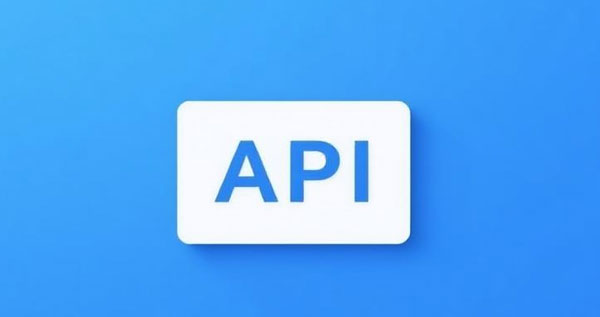Mastering WhatsApp API Message Status Tracking and Error Handling Mechanisms
1. Why is Message Status Tracking So Critical?
When businesses integrate WhatsApp API as a messaging platform into their customer service, notification, or marketing systems, the questions “Was the message delivered successfully?” and “Has the customer read the message?” go beyond just technical issues—they become the foundation of user experience and business decision-making.
This can be likened to "logistics tracking" in e-commerce. After sending a package (message), it’s crucial to know whether it arrived, who signed for it, and if it was returned. Everything needs to be tracked and reported.
Similarly, for WhatsApp API, mastering message status callbacks (Callback Webhook) and error response mechanisms is like running a digital logistics center. Without status tracking, everything becomes “send and forget,” leading to wasted resources and potentially causing customer trust to erode.
2. WhatsApp API Message Lifecycle Model
WhatsApp provides a clear message lifecycle model for every message, enabling businesses to track the message status at every stage:
Send → Receive → Delivered → Read → User Response (or no response) → Message Timeout/ExpirationThe official Webhook provides status update notifications, with key statuses as follows:
Status | Meaning |
|---|---|
| Message successfully sent to WhatsApp server |
| Message successfully delivered to user’s device |
| User has read the message |
| Message failed to send due to an error |
By listening to these statuses, businesses can implement:
Operational monitoring: Adjust messaging templates based on high failure rates;
Customer profiling: Determine whether users are reading and responding actively;
Smart retry mechanisms: Automatically attempt to resend failed messages via alternative channels.
3. Webhook Status Listening Mechanism Explained
3.1 Webhook Setup Overview
To receive WhatsApp API status notifications, you need to:
Configure a Webhook subscription on the Facebook Developer platform;
Ensure your receiving URL is publicly accessible and supports POST requests;
Validate that your server returns the correct verification token;
Subscribe to
messagesandmessage_statusevent types.
3.2 Example of Webhook Message Structure
When you receive a status notification, the request body structure will be in JSON format, such as the following:
{"entry": [{
"changes": [{
"value": {
"statuses": [{
"id": "wamid.HBgM...A",
"status": "delivered",
"timestamp": "1681678203",
"recipient_id": "1234567890"
}]
},
"field": "messages"
}]
}]
}
3.3 How to Handle These Statuses?
You can take different actions based on the status field:
sent: Log the sent time and store it in a message tracking table;delivered: Mark as successfully delivered and update user activity;read: Trigger follow-up actions, such as prompting users to complete a form or leave feedback;failed: Enter error handling procedures.
4. Common Error Codes and Handling Suggestions
Here are some common error types and how to handle them:
Error Code | Error Type | Suggested Solution |
|---|---|---|
131051 | User Blocked | Stop sending, mark as blocked user |
131042 | Template Rejected | Check template content, resubmit for approval |
132000 | Exceeded Rate Limit | Reduce send rate, increase retry delay |
470 | Parameter Error | Check phone number and template parameter structure |
100 | Invalid Token | Ensure you're using the correct access token |
In your code, you can capture and handle these errors as follows:
response = requests.post(api_url, headers=headers, json=payload)if response.status_code != 200:
error_data = response.json()
print("Send failed:", error_data.get("error", {}).get("message"))
5. Designing a Highly Available Message Status Tracking System
5.1 Architecture Recommendations
To ensure a scalable and efficient message status tracking system, it’s recommended to decouple message sending from status processing. This allows businesses to handle issues like retries and status updates without affecting the rest of the system.
A recommended architecture would be:
Message Producer (CRM/Backend Service) → Message Queue → Sending Module → Webhook Receiver → Status Processing Engine → Data Storage and AlertsBy decoupling message sending and status tracking, businesses can scale their system more efficiently and handle sudden spikes in message volumes.
5.2 Status Storage Design Recommendations
To ensure the persistence and query-ability of message status data, it is critical to design a proper database schema. Below is an example of a MySQL table to store message status:
CREATE TABLE whatsapp_message_status (id BIGINT PRIMARY KEY,
message_id VARCHAR(64),
recipient_id VARCHAR(20),
template_name VARCHAR(64),
sent_time DATETIME,
delivered_time DATETIME,
read_time DATETIME,
status VARCHAR(20),
error_code INT,
error_message TEXT
);
5.3 Real-Time Alerts and Monitoring
To ensure system stability and rapid response, businesses should set up real-time alert mechanisms:
Trigger alerts via DingTalk, Slack, or email when the message failure rate exceeds a threshold (e.g., 5%);
Automatically pause templates that are repeatedly rejected and notify internal teams;
Use third-party services like Luckdata’s WhatsApp Validation API to verify phone number validity before retrying failed messages.
import requestsheaders = { 'X-Luckdata-Api-Key': 'your_free_key' }
json_data = { "phone_number": "85298765432" }
response = requests.post(
'https://luckdata.io/api/whatsapp-number-validator/rltsvuouydi1',
headers=headers,
json=json_data,
)
print(response.json())
6. Common Practical Issues and Solutions
Issue | Suggested Solution |
|---|---|
Delay in status processing | Use asynchronous task queues (like Celery, RabbitMQ) to handle status data |
Template rejection issues | Regularly review and update templates to comply with Meta’s guidelines |
Message delivered but not read | Set up smart follow-up strategies (e.g., non-intrusive reminders) |
Large-scale sending failures | Analyze send logs in batches to check for rate limits or account risk |
7. Conclusion
Message status tracking and error handling are often underrated but highly valuable components of WhatsApp API integration. They not only enhance the technical control of developers but also help businesses build a more scientific and efficient customer interaction process.
Through this article, we hope you can:
Understand the complete message lifecycle of WhatsApp API;
Correctly handle message failures and error codes;
Design a sustainable, traceable, and scalable message tracking system;
Use tools like Luckdata to avoid invalid communications and resource waste.
A robust message feedback mechanism is not only a compliance requirement but also a "visible trust" in your business communication system.
If you’re building a WhatsApp-based communication system, consider making “message status” your second core metric, right after “customer response rate.” Because, only when you can see the fate of every message, can you truly master the rhythm of each customer interaction.




